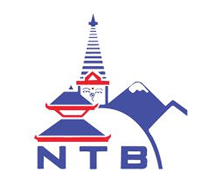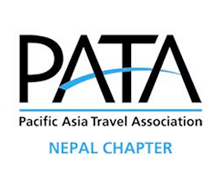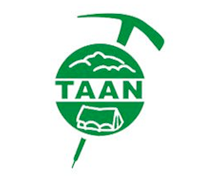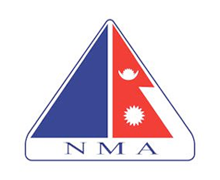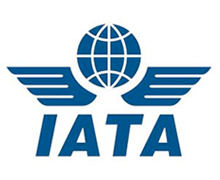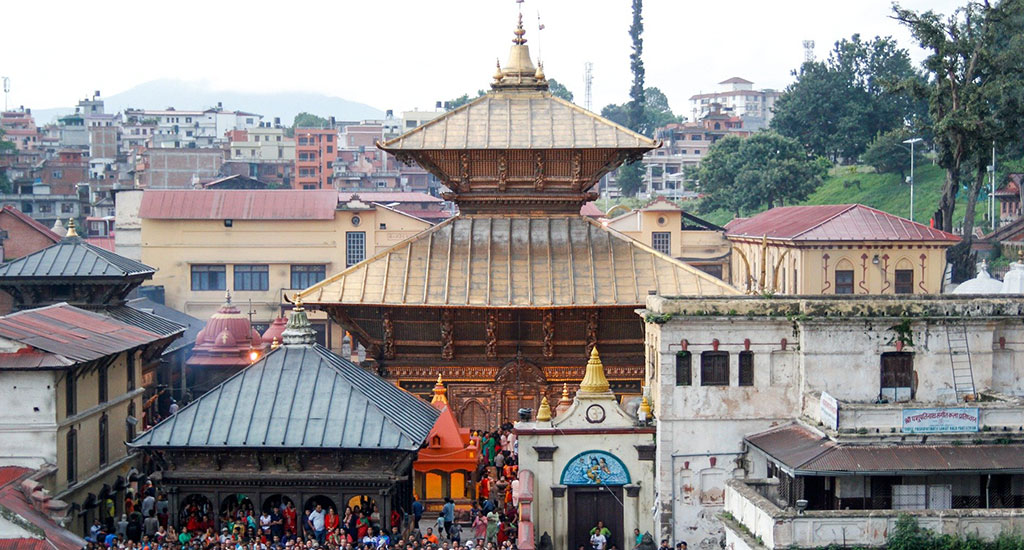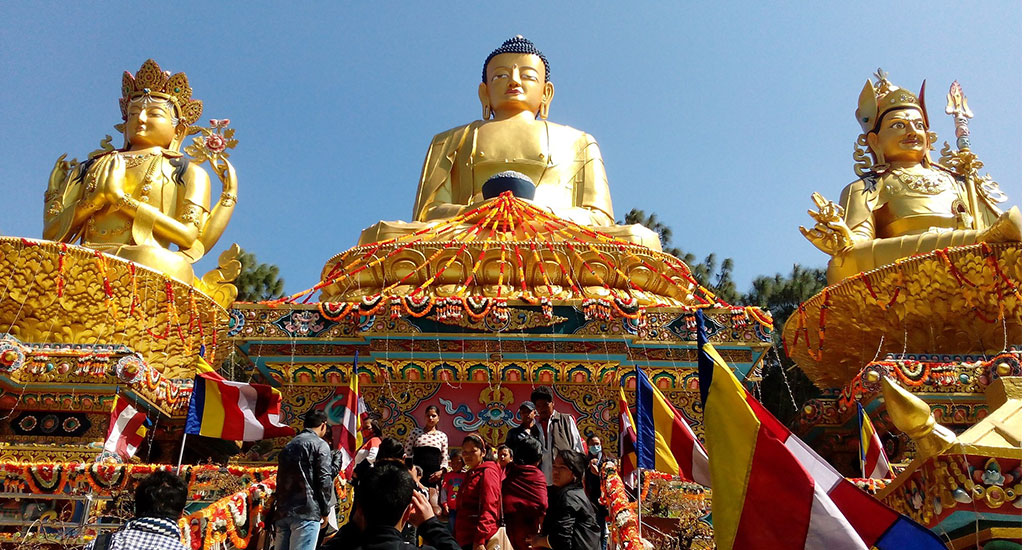Trip facts
Difficulty
Easy
Duration
19 Days
Activity
Trekking
Destination
Nepal
Max Altitude
4,915m
Trip Starts
Kathmandu
Trip Ends
Kathmandu
Difficulty
Easy
Duration
19 Days
Activity
Trekking
Destination
Nepal
Max Altitude
4,915m
Trip Starts
Kathmandu
Trip Ends
Kathmandu
Dhaulagiri Base Camp at 4750m camping in the moraines and glacier in the remote North West Dhaulagiri range mountains and then trekking towards the popular ancient Trans Himalayan Salt Trade route (an Old Caravan Route from Nepal to Tibet) and through the world's deepest gorge of Kali Gandaki Valley and finally completing this great adventure at Jomsom with sweeping scenic flight to Pokhara and then to Kathmandu.
Dhaulagiri Base Camp trekking combines almost all of the trekking environments that Nepal Himalaya has to offer, from the temperate sub-tropic low farmlands to alpine zone in the deep woods the arid and windswept valleys and towards the dense forests of the lower warmer region to high snow crested ridge and remorseless ice field. This is the only trekking area where one can view the rare face of Mt. Dhaulagiri and the Annapurna massifs.
It is a panoramic thrill flying into Kathmandu on a clear day. The views of snow-capped mountain peaks sprawling down below you are almost ecstatic, beginning a whole chain of memorable experiences that stay with you for a long, long time. A representative and driver from Yeti Holidays will meet you at the airport and escort you to your designated hotel. The representative will help you check into hotel. At the hotel you will be briefed about your daily activities.
Check In and Overnight at Hotel.
Meals: None
After breakfast at the hotel, commence the sightseeing tour of Kathmandu city, Swayambhunath and Patan city.
KATHMANDU CITY: Kasthamandap, the source of the name Kathmandu means ‘made from the timber of a single tree’. Also known as Kantipur, the capital Kathmandu is the hub of Nepal's art and culture. It is a place for rest, relaxation and easy-day sightseeing of historic and artistic temples and monuments. Kathmandu Durbar Square with its arrays of temples, Seto Machhindranath and the ancient palace of the former Nepali Royals enriches your experience of the centuries old civilisation.
SWAYAMBHUNATH STUPA: Said to be around 2000 years old, this Buddhist Stupa sits atop a hill. The main stupa is composed of a solid hemisphere of brick and earth supporting a lofty conical spire crowned by a pinnacle of Copper gilt. Painted on the four sided base of the spire are the all seeing eyes of Lord Buddha. The hill of Swayambhunath is a mosaic of small Chaityas and Pagoda temples. You’ll get a scenic view of Kathmandu city from there.
PATAN CITY: Located about 5 km south of Kathmandu, Patan is one of 3 royal cities in the valley. A destination for connoisseurs of fine arts, Patan is filled with wood and stone carvings, metal statues, ornate architecture, including dozens of Buddhist and Hindu temples, and over 1200 monuments.
Patan is believed to have been built in the third century B.C. by the Kirat dynasty later expanded and enriched by the Licchavi and the Malla rulers in the medieval period. Patan Durbar Square, like its counterpart in Kathmandu, is an enchanting mélange of palace buildings, artistic courtyards and graceful pagoda temples. The former Royal palace complex is the centre of Patan’s religious and social life, and houses a beautiful museum.
Overnight at Hotel.
Meals: Breakfast
Pokhara is a remarkable place of natural beauty. At an elevation lower than that of Kathmandu, it has much more tropical feel to it; a fact well appreciated by the beautiful diverse flowers that prosper in this environment. The enchanting city with a population of around 95,000 has several beautiful lakes and offers stunning panaromic views of Himalayan peaks. The valleys surrounding Pokhara is home to thick forest, gushing rivers, emerald lakes and of course, the views of world famous Himalayas. The serenity of the lakes and the magnificence of the Himalayas rising behind them create an ambience of peace and magic.
Pokhara is the most popular destination for visitors to Nepal. The city is also known as the center of adventure. There is little in its past by way of neither history nor culture impact and the only important role that the old Pokhara played was that it was along the route of trade between India and Tibet. Today it is one of the fastest developing cities of Nepal, mainly due to tourism.
The natural beauty of its lakeside location and its proximity to the mountains has made it the natural choice for trekkers and adventures. Pokhara is also the base for some of most famous trekking circuits of Nepal. By itself surrounding area provides ample scope for short walk and day trips, suitable for children or weary trekkers, which can be made around the valley.
PM: At leisure.
Overnight at Hotel.
Meals: Breakfast
Drive from Pokhara towards Beni town, headquarter of the Myagdi district after Beni another 2-3 hours of good scenic drive brings you at Darbang to begin this classic trekking. Darbang a farm village turn into town as the motorable dirt road was completed few years back. There is quite a lot of traffic of many porters' mules and donkey trains carrying load of merchandise on the Myagdi and Kali Gandaki route.
Overnight at camp.
Meals: Breakfast, Lunch and Dinner.
Today first day trekking is a short one of 3 - 4 hrs, necessary to regroup and organize after the long drive from Kathmandu-Pokhara to Darbang. Morning walk leads to cross the Myagdi River over the suspension bridge, the trails winds up gradually for an hour to Phedi meaning bottom of the hills. After leaving the River behind a steep climb of one hour reaches to the cooler region at the ridge, then a short easy walk will brings to the village at Dharapani, a stunning views of Putali and Ghurja the western peaks adjoining Dhaulagiri massif can be seen from the campsite at Dharapani.
Overnight at camp.
Meals: Breakfast, Lunch and Dinner.
From Dharapani, the path follows along the farm fields and to the snout of the ridge where Dhaulagiri Himal is visible. Then the trail leads to a descend towards the Gatti Khola, from here two hours of steady climb leads to large village of Mure for the overnight camp, at the confluence of the Myagdi and Dhara Rivers.
Overnight at camp.
Meals: Breakfast, Lunch and Dinner.
The route skirts around and descends to the warm areas of paddy fields penetrated by the tributary Dhora Khola. After crossing Dhora Khola, the main path ascends the hill side, passing the rural farm houses, and through a hamlet and then leading to an up and down path then skirting around the ridge. The path continues winding steep uphill for two hours and coming at the top of the ridge. The path descends gradually to a small farm village at Bagar after six hours of good.
Bagar is the last village on route to Marpha village at the Kali-Gandaki valley.
Overnight at camp.
Meals: Breakfast, Lunch and Dinner.
On leaving Bagar village and its farm fields following the path through the forest which climbs on the west side of the River Myagdi, trek follows the narrow undulating trail above the river Myagdi, reaching the ridge top, then the path descends steeply in some section coming to a clearings where we find number of stone built Shepard's huts. Gradually ascending, encounter the grassy clearings and after a total of 5 to 6 hours of peaceful walk reaching at a level ground of grassy field 'Kharka' named as Dovan.
Overnight at camp.
Meals: Breakfast, Lunch and Dinner.
From the camp at Dovan route follows the path to the River after less than 30 minutes of walk, then coming to bank to cross Konaban Khola, depending upon the level of the River. After crossing the bridge walk follows through the forest for a while then crossing another log over the tributary stream then once again entering the forested area until the ascent becomes a descent, and from here one can see the west wall of Dhaulagiri I, between the trees. Then heading down to Myagdi Khola side and take the left bank path, and climb up towards another khola called the Pakite Khola, without ever getting too far from the Konaban River, crossing this little stream-Pakite khola to the table land of Chartare, or the Bhainsi Kharka.
Overnight at camp.
Meals: Breakfast, Lunch and Dinner.
On leaving the campsite, following the trail ahead leading to the forest area known as Italian Base Camp. The trial heads into a rocky area then climbs the mountain side with a steep hill at the end, then crossing the steep hill the path narrows to cross and descend to the other glacier that originated from the West wall of the Dhaulagiri, climbing the opposite bank to a wide grassy area in a narrow gorge valley of Pakhaban, also known as Japanese Camp. Pakhaban a beautiful campsite with impressive West wall of Dhaulagiri I and to the rear the huge stone walls from Tsaurabong Peak.
Overnight at camp.
Meals: Breakfast, Lunch and Dinner.
Following a lateral moraine from Pakhaban to a rocky ridge which descends down to the right side of the valley buried in snows and fallen rocks, then entering the glaciated area from the rocky right side banks, walking along the undulating glacier surface as the valley bends to the right bank route with short up and down passage to Dhaulagiri Base Camp situated at 4750m high. Looking up at the impressive North face of Dhaulagiri I, while to the west the peaks of Dhaulagiri II (7751m.), III (7715m.) and IV (7618m.) stand soaring to the sky, and the desolate Ice Fall descends from the Col between Dhaulagiri and Tukuche Peak. Overnight camp will be made on the clearing of rocky moraine with close view of Dhaulagiri I and its massif glacier and icefall.
Overnight at camp.
Meals: Breakfast, Lunch and Dinner.
From Dhaulagiri Base Camp, journey continues heading to the moraine and glacier, the path follows close to Tukuche Peak, after the glacier climbing a rocky terraced hill on the right bank side, entering a gentle slope on right side of the valley and further, climb up to French Col at an elevation of 5360 meters. On reaching the highest point of this journey at French Pass where the Buddhist prayer flag or Lungta are hoisted by fellow trekkers and climbers respecting the mountain spirit, from this vantage point offering stunning view of Sita Chuchura, the mountains of Mukut Himal, and Tashi Kang (5386m.), all of which surrounds the Hidden Valley. To the right is Tukche Peak west and to the rear stands the huge Dhaulagiri I. A gentle descent along the snow covered landscape finally leads to the overnight halt at the wide Hidden Valley. This Valley remained behind Dhaulagiri massif undiscovered, until last few decades.
Overnight at camp.
Meals: Breakfast, Lunch and Dinner.
Reserve or spare day, in case if there's problem or difficulty on route. If it goes well with the program, can have rest day here to explore around this Hidden Valley, depending upon the weather as well or move to lower camp.
Overnight at camp.
Meals: Breakfast, Lunch and Dinner.
After a wonderful time at Hidden Valley, adventure continues to cross Dhampus Pass at 5250m. The trek follows on the gradual path for an hour with short climb in between, and it gets narrow on the scree section for an hour, then towards the high traverse across Dhampus Pass at 5250m overlooking the deep cleft of the Kali Gandaki Valley and the Annapurna peaks beyond. On reaching the top ridge at Dhampus Pass, view of Mukut Himal is visible from the pass as the Hidden Valley is being over looked behind the Col. It’s a steep downhill along the rock covered mountain side until to the campsite at Yak Kharka. Yak Kharka, a summer pasture, Dhaulagiri I is hidden by the bulk of Tuckche Peak, but Nilgiri and the western end of the Annapurna massif are visible.
Overnight at camp.
Meals: Breakfast, Lunch and Dinner.
This morning walk leads towards a steep down along the narrow mountain path up to a ridge from where Dhaulagiri I and the Tukche Peak become visible again. Walk descends on the left banks along the Kali Gandaki River up to Marpha Village one of the most charming villages on this route, famous for its apple and its product situated at Trans-Himalayan Salt Trade (Caravan) Route. From here a short drive reaches you at Jomsom; headquarter of Mustang area, Marpha and Jomsom located at the windswept Kali-Gandaki valley of lower Mustang region an extension of Tibetan plateau.
Overnight at camp.
Meals: Breakfast, Lunch and Dinner.
All flights to Pokhara are morning scheduled due to the heavy winds, as per the flight time a sweeping scenic flight brings you at Pokhara, from Pokhara transfer to respective Hotels, a perfect spot to relax in this warm tropical spot with the backdrop of Annapurna and Manaslu mountain range including the majestic peak of Mt. Machhapuchare.
Overnight at Hotel.
Meals: Breakfast.
A morning drive from Pokhara to Kathmandu, an interesting winding highway reaches you at Kathmandu, on arrival transfer back to Hotel.
Overnight at Hotel.
Meals: Breakfast.
A free day in Kathmandu, please inform us if you would like to go on another short tour in and around Kathmandu Valley or Nagarkot or Dhulikhel.
Overnight at Hotel.
Meals: Breakfast.
We ensure that you will leave Kathmandu with cherishing memory and an experience of a lifetime. Our representative from Yeti Holidays will drive you to the airport in time for your flight back home.
Meals: Breakfast.
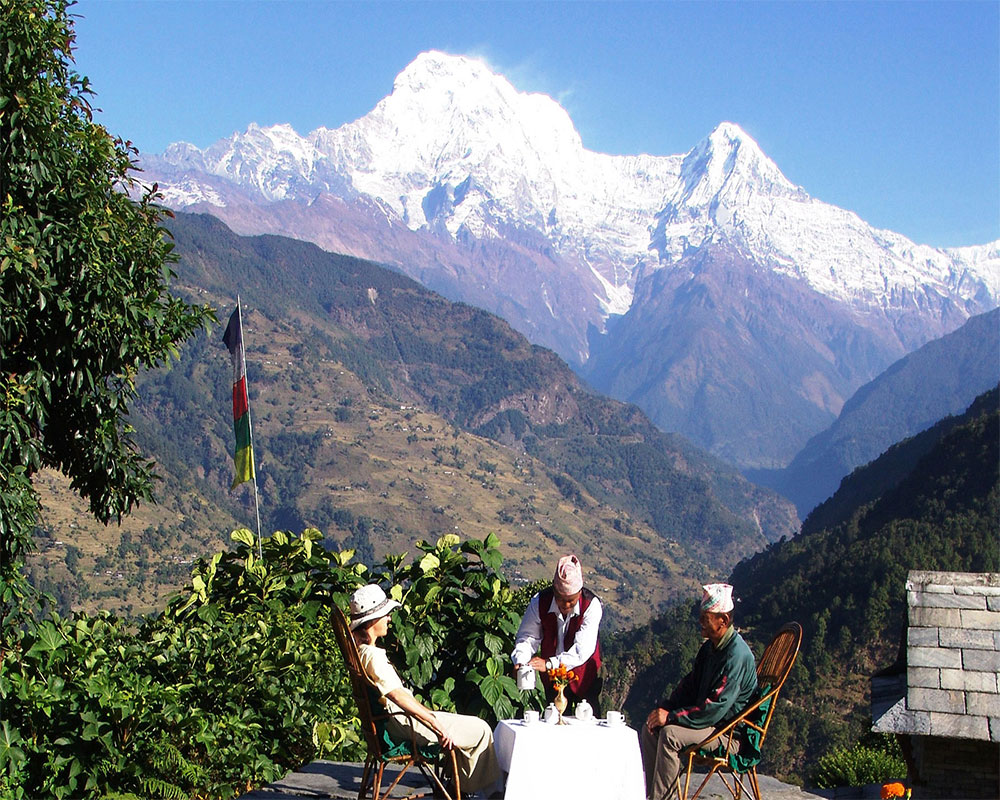
Trekking
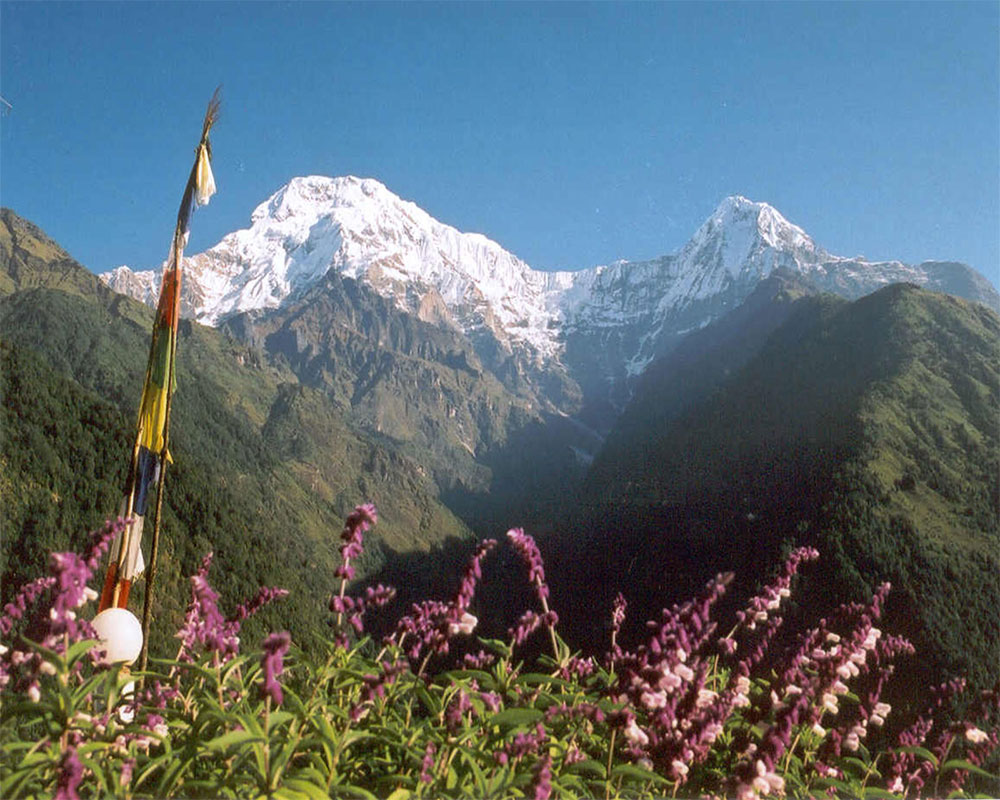
Trekking
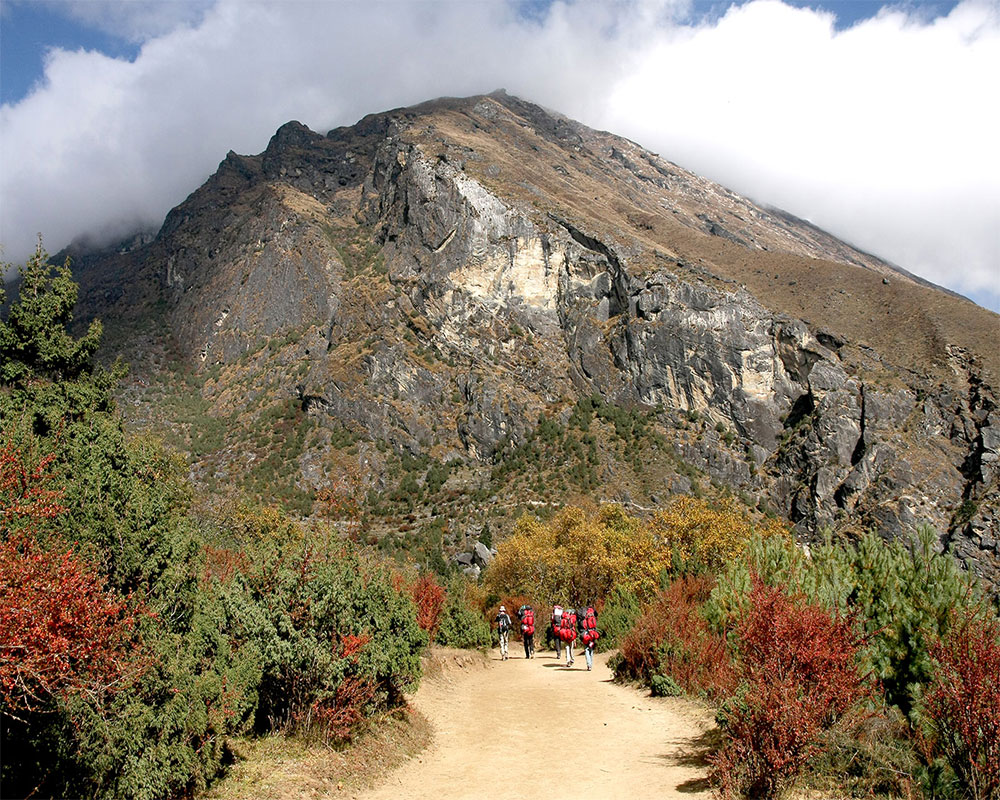
Trekking
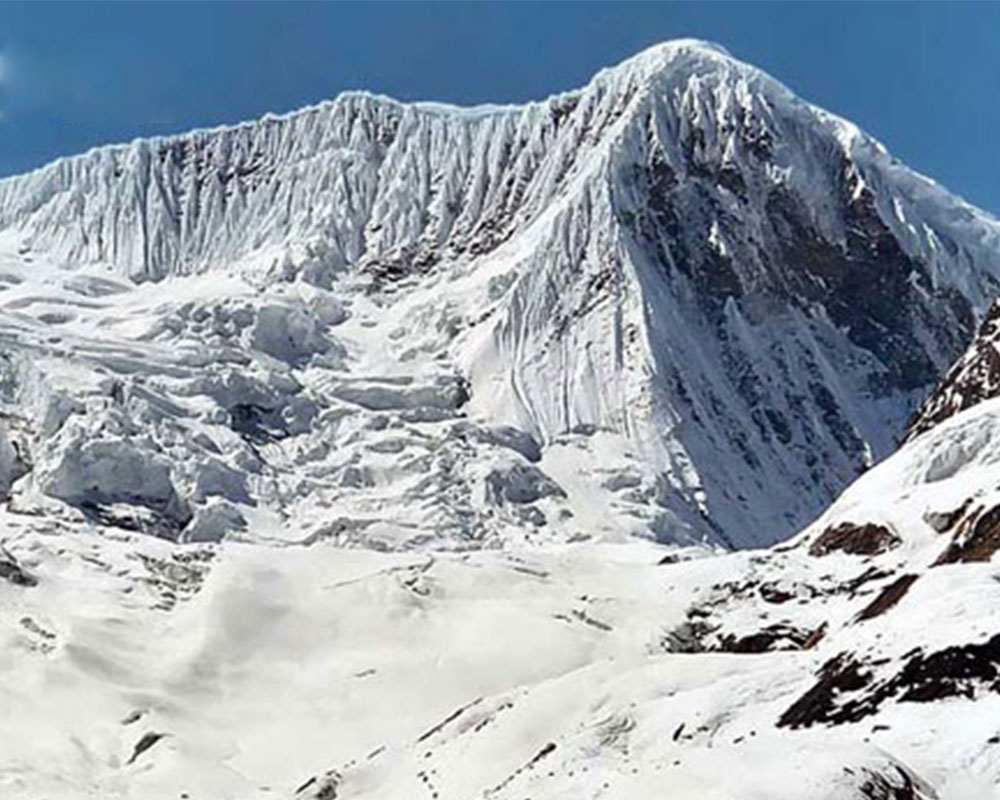
Trekking
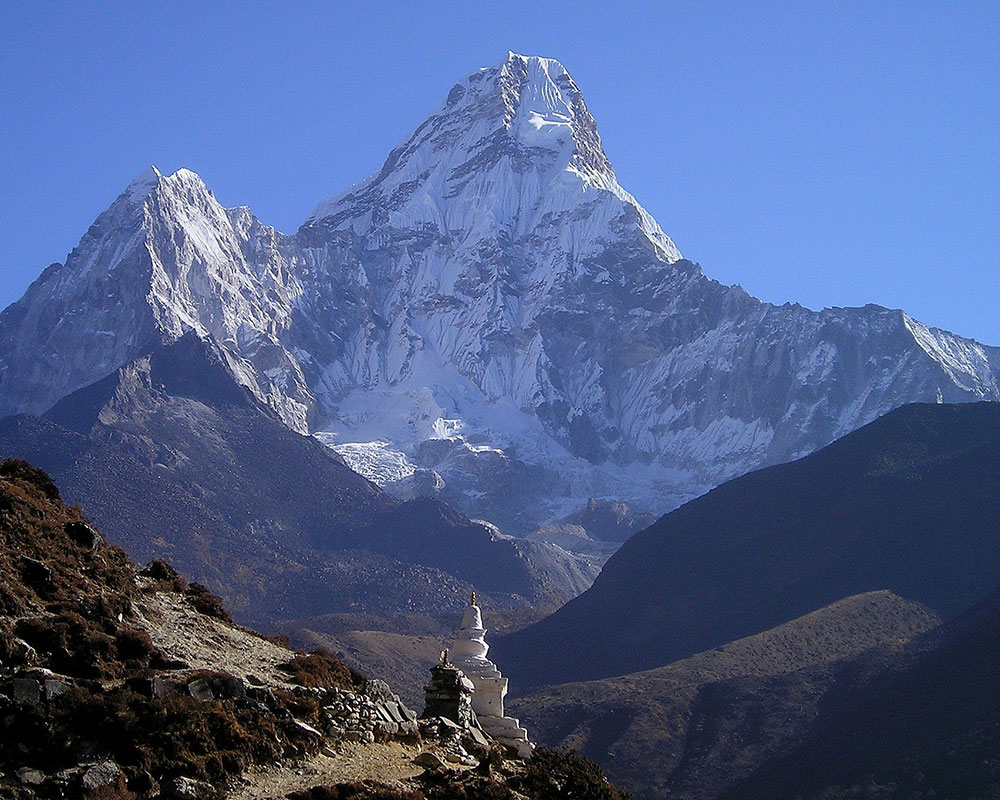
Trekking
Duration
16 Days
Altitude
3,864m
Difficulty
Easy
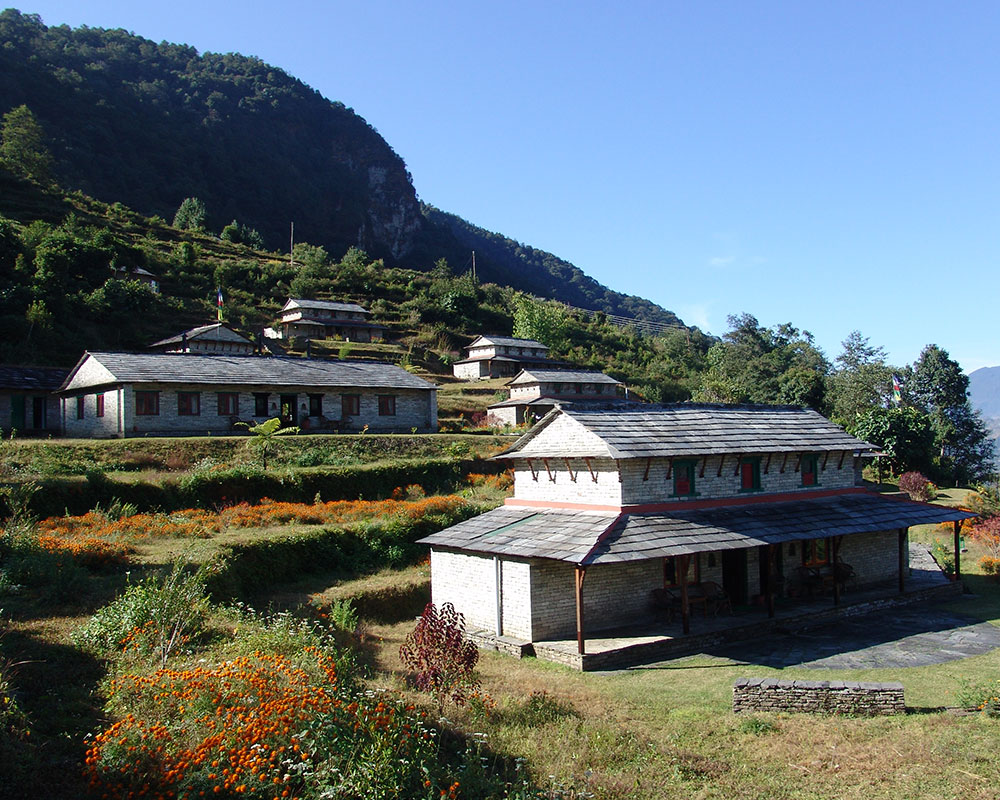
Trekking
Duration
11 Days
Altitude
2,012m
Difficulty
Easy
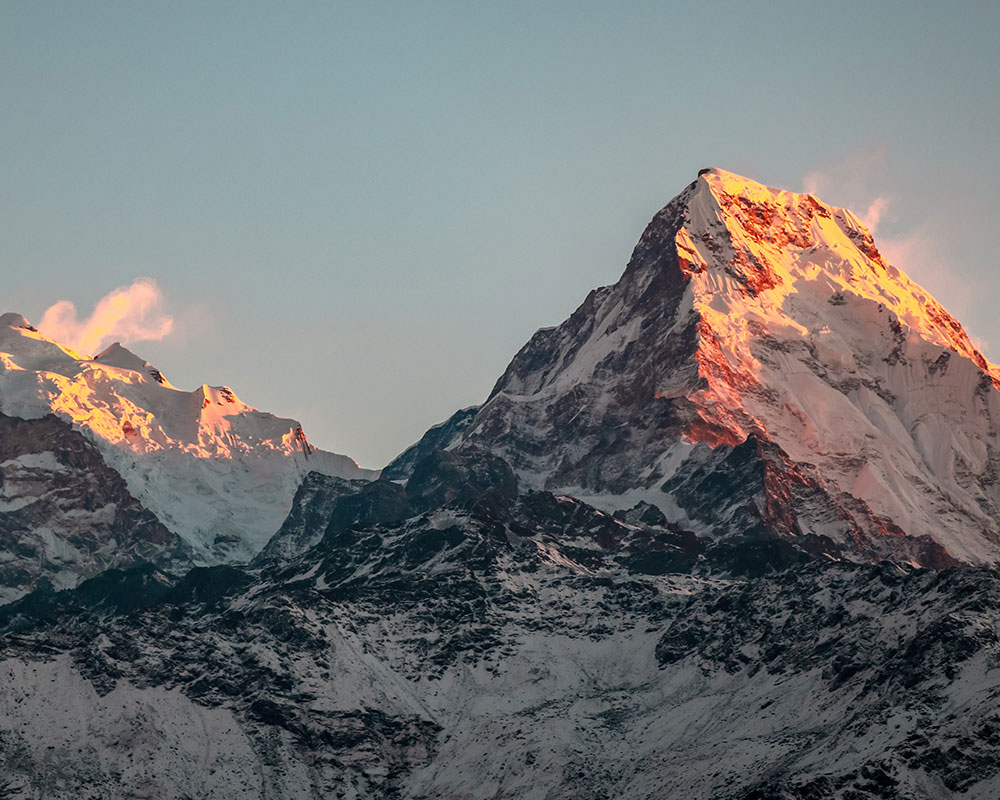
Trekking
Duration
13 Days
Altitude
4,130m
Difficulty
Easy

Website by Curves n’ Colors
